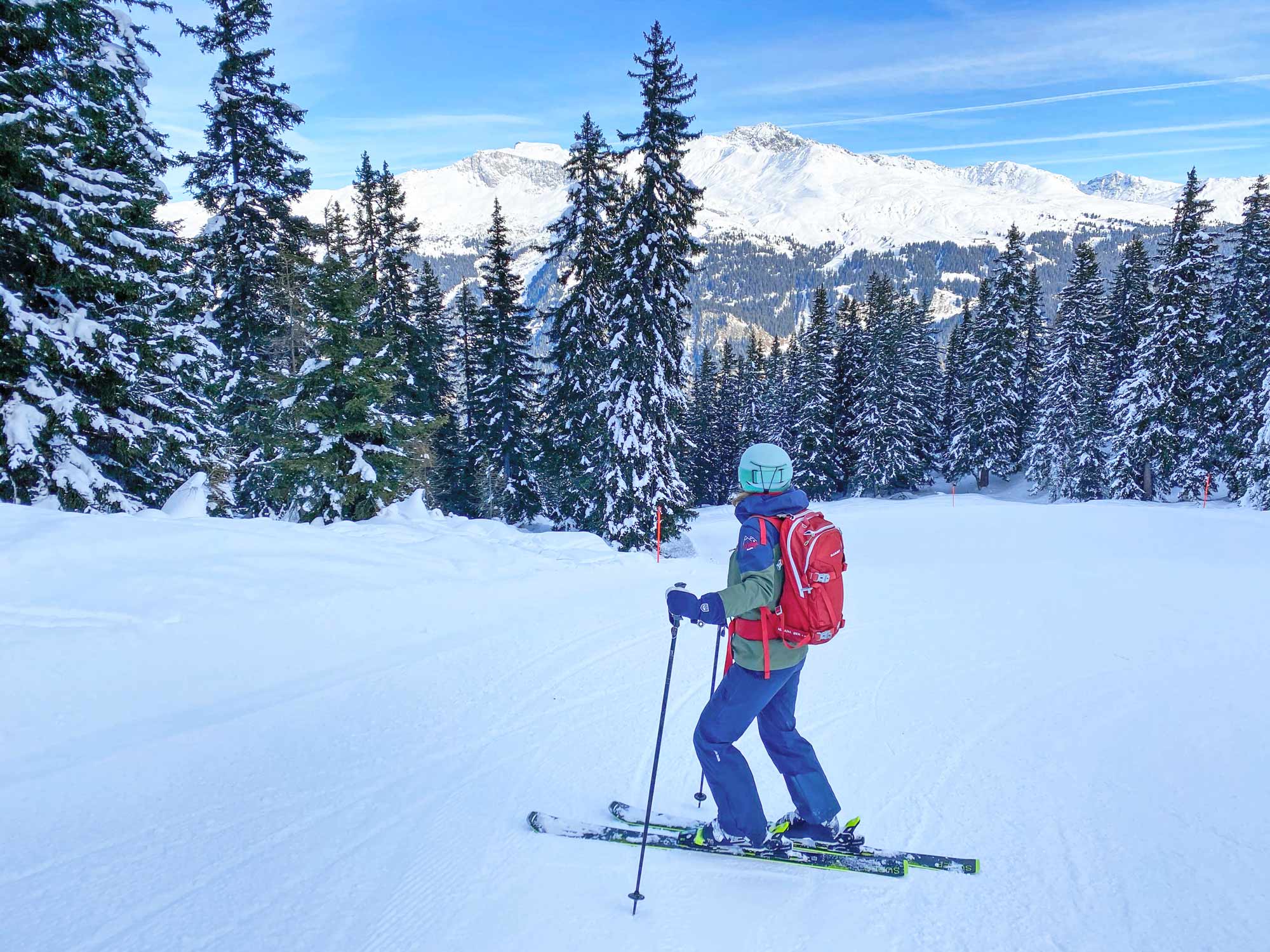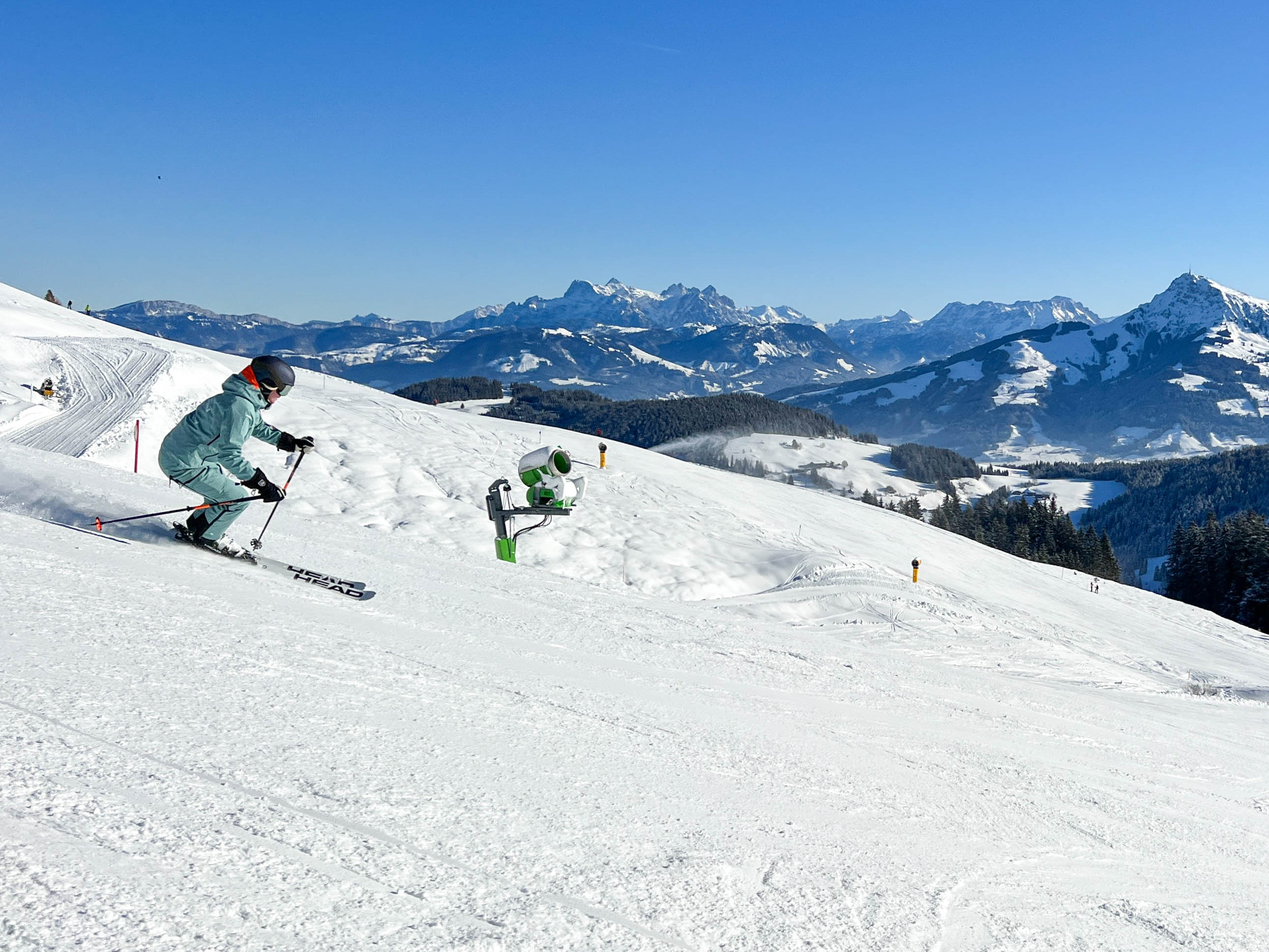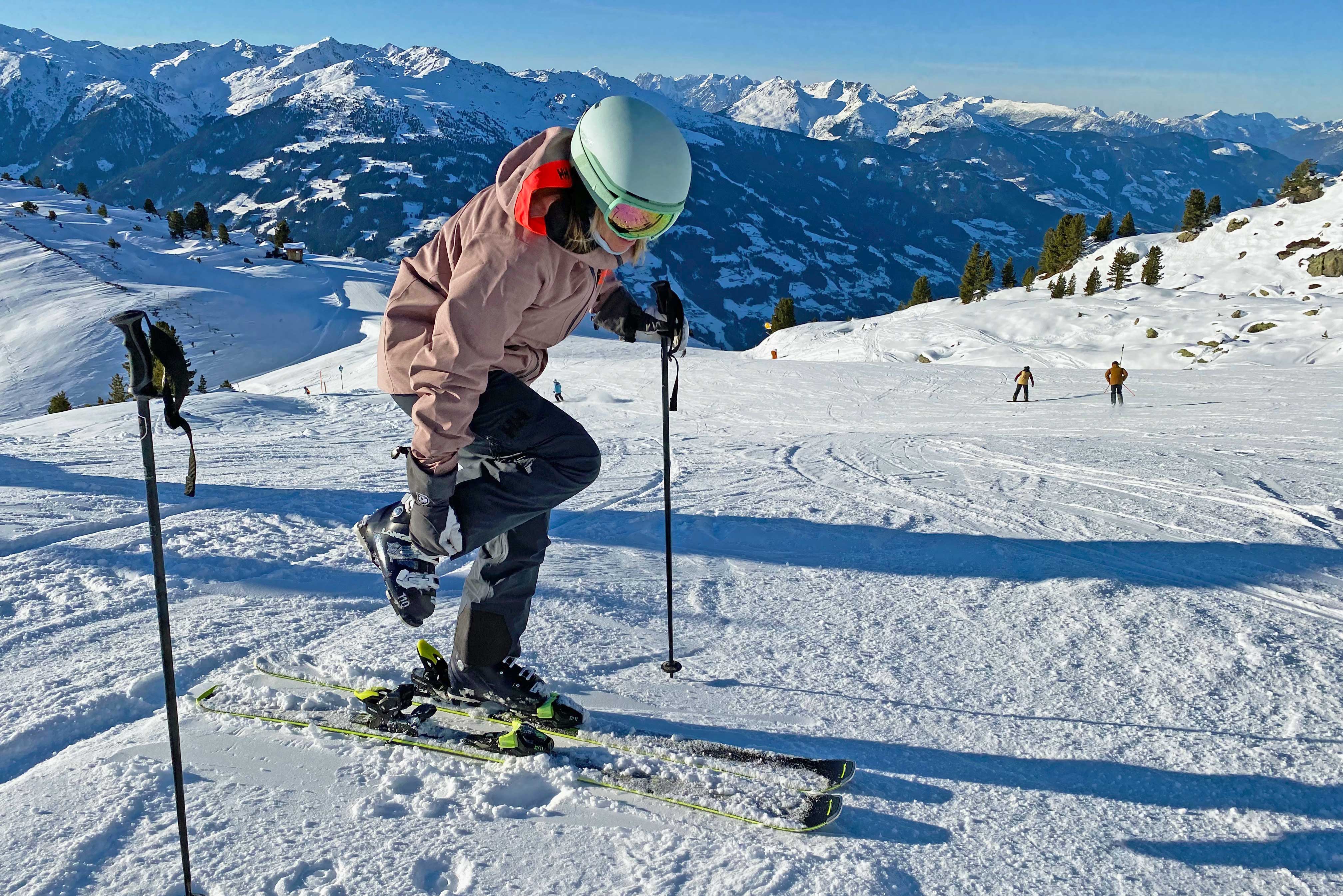

Skiing is an incomparable sport which combines technical skills and the thrills of speed in stunning, unforgettable surroundings. However, first things first – you need to know how to ski! It’s never too late to learn to ski, although the learning curve is much faster the younger you are. You can learn how to ski alone or with an experienced friend, however you’ll make much faster progress at ski school. We’ve put together a briefing on how to ski before your first ski holidays explaining how to find the best skis and ski boots for beginners, how to put your skis on and how to find your ski legs. Ready to hit the slopes?
Five tips & skiing exercises to help you learn how to ski
The only way is down! This may sound stupid but this is the basic principle when skiing. Changing your weight and position will control your speed and stop you from falling and gravity does the rest. Skiing may look simple, but learning how to ski is not something you can do overnight. Before you get to enjoy steep, black pistes, mogul fields and off-piste skiing in deep snow, there are some basic elements such as putting on your skis and side stepping you need to know about. Below Snowplaza gives five tips about finding the best skis and ski boots and the basics of how to that will help you prepare for your first ski holidays.

1. Good skis are the secret to learning how to ski
So let’s talk skis! Beginners should choose shorter, wider, flexible skis when learning how to ski but don’t worry too much about this as we strongly advise hiring skis and boots and you should get all the help you need in local ski hire shops. If you’re given skis that look scratched and old, don’t worry, this is because beginners spend a lot of time crossing their skis and the attractive designs tend to get damaged. However, there are 2 important things to look for when hiring skis:
- Turn the skis over and check the underside. There should be no deep scratches or holes in the hard plastic ski base – this part often becomes damaged and needs regular maintenance.
- Each ski has a metal edge and this should be a 90°, sharp edge or you will not be able to grip on steeper slopes or turn. This metal edge cuts into the snow and gives you control. If one of these factors is not to your satisfaction, ask the supplier to change or repair your skis. This is not a question of being a difficult customer, it is a question of your and others’ safety on the slopes.
Ask staff in the ski hire shop to show you the best and safest way to carry your skis. You will soon realize how important this is when you arrive in busy areas in the ski resort and some people are waving sharp-edged skis around like golf clubs!
2. Good ski boots are essential – even for complete beginners
Ski boots are a very personal thing and you need to spend time trying on different models – certainly don’t feel obliged to take the first pair you are given. Ski boots are well-known for not being the most comfortable form of footwear but don’t be tempted to go up a size if they feel too tight. When you find a pair that feel relatively comfortable, let the shop staff tighten them for you, stand up and do these 2 things:
- bend your knees and try and lift each heel off the ground;
- move each foot putting first your heel then your toes to the ground and see if your foot moves to the back or front of the boot
If either of these things happen, then your boots do not fit correctly and you need to try another model! These small movements may seem petty but it is your foot that controls your ski and if there is a 0.5cm movement in your boot, by the time you transfer this to the end of your ski, you will have very little control! And control is what you need when learning how to ski. If your foot can move around, you will also have sore feet at the end of the day as you use muscles that you don’t usually use to compensate and stop the movement. Read about hiring or buying equipment

3. Putting your skis on or the first time
You have found a flat area, preferably a dedicated beginners’ area or somewhere far from the main skiing traffic and it’s now time to put your skis on for the first time. Place your skis across the slope parallel to each other – on flat areas this is not very important but as you progress, this is vital detail. You’ll notice each ski has 2 ski stoppers at the side of the binding which dig into the snow and then fold up once you put your skis on. First slip the toe of your boot into the front of the binding and then you need to give a good downward kick to push your heal into the back of the binding. If you don’t hear a clear, clean click then try again as your ski boot may not be correctly fitted into the binding - and your ski may come off too easily causing you to fall. While doing this, use your poles or a friendly passerby to keep your balance. If there is fresh snow on the ground, check you don’t have snow on the bottom of your boots before you try to get your skis on.
4. How to ski your first steps
Once you are standing comfortable and have got your breath back after the effort of carrying skis and putting them on, now you can start to find your ski legs and learn how to ski. Make sure you’re leaning forwards rather than backwards with your knees slightly bent and start to “walk” or rather slide your skis while transferring your weight to the ski that you are sliding forward. If you have ever tried roller skating or ice skating, then this movement should come quite naturally. After slipping and sliding for a while, try pushing with your poles to get a little speed up on the gentle slope you have chosen – just to get the feel of your skis. If you feel you’re going too fast and you have no control, don’t panic, just sit down putting your hands down and you’ll slow to a stop - at some point!

5. Learning how to stop and turn
Learning how to stop is a fundamental and life-saving part of learning how to ski. While standing still on a flat surface, maneuver your skis into a V position with the tips together and the backs of the skis quite far apart. Do this by taking small steps with each leg – until you reach a comfortable position. This position is generally called “snow plough” and it will be one of your favorite for your first few days on the ski slopes. The snow plough position is also used to turn when learning how to ski. Once you are moving forward on the snow, you take the snow plough position and then simply put more weight on one leg and you will automatically turn. Once you have mastered these 2 basics of learning how to ski, there is no looking back – the mountain is yours!
Best ski resorts for learning how to ski
For first time skiers, there are many ideal ski resorts which are well-adapted for those learning how to ski. These resorts have good ski schools, specially designated beginners’ areas, easy slopes back to the resort and plenty of green and blue pistes. (Note: green = complete beginner, blue = beginner/intermediate, red = intermediate, black = expert). Snowplaza has put together a selection of the best ski resorts for beginners so that learning how to ski can be fun and safe and make you want to go back for more! Best ski resorts for beginners.
Good ski boots from Head image widget
Having fun learning to ski skier with poles in air image widget















